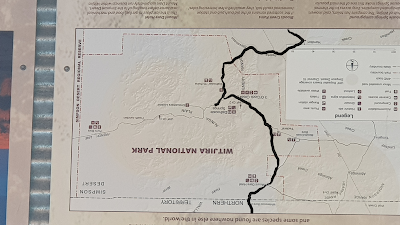With our summer in Tassie drawing to a close, we focused on the next adventure. The Canning Stock Route, for a long time now it had been on our bucket list. During the summer months in Tassie I had been preparing for this trip. Maintaining Ned the truck and gathering the things needed for an extended remote and isolated trip.
A winch was added to Ned, and extra fuel containers purchaced, as well as a lot of other things such as sand tracks for getting unstuck in soft sand. Spring bushes were replaced and a full service performed.
The Canning, from Wiluna in the South to Halls Creek in the North of WA is considered the longest and most remote 4wd track in Australia, if not the world, at 1800k long and around 900 sand dunes to transverse, it has only one spot,1000k from Wiluna to refuel, so carefull preperation is key.
Unusal heavey rain in the north of Australia had soked the northern part of the track, so it was unsure if that part would dry out for us to travel on. By the time we got to there it may be alright, we had options to go elsewhere if it wasnt.
Back on the mainland, our plan was to cut through Victoria to South Australia and head up the Oodnadatta track and track north from Oodnadatta to Mt Dare and into Northern Territary and onto Alice Springs, then up the Tanami Track to Billiluna, the northern start of the Canning. SSo off we went.
After a visit to Deb our friend in SA we headed for the Oodnadatta Track. First point of intrest for us was Lake Eyre, with all the rain, the lake was filling from the northern water coming down.
Pulling up at Lake Eyre South no water was visible, we were a little early, but it was on its way.
So it was onward for us. Taking our time, as usal, we meanderd up the track, camping at ruins of sidings along the old Gahn railway along the way. One of our camps was at Algebukna Bridge, a long steel railway bridge spanning a small river along the old railway line.
Some days later the buildings of Oodnadatta appeared on the horizion. Rolling into town, we pulled up and did the usal, fuel up, got some supplies as well as a coffee and snack.
After asking about the track to Mt Dare and finding out it was all good to go it was back to the road. Firstly though, Din got some postcards and posted them to the grand kids.
Turning north, Ned pointed his nose up the Mt Dare road. We went as far as Hamilton station then turned east along the Perdirka track which takes you past the old Dalhousie homstead ruins, then on to Dalhousie Springs, a system of hot springs in Witjira National Park.
Comming up to the homestead ruins, date palms stood proudly amongst the slowly crumbling stone buildings. Stone walls defying the elements to do their worst, still standing after all this time.
After a walk through the past, we bumped our way down the track toward the springs. There is a large campground at the springs and a wooden dock where you walk out and down some stairs into the artesian warmed spring pool. Setting up camp we enjoyed the solitude, with only a few others scattered about in the campground. In the mornings, steem rises from the surface of the water creating a mystical scene in the early light.
Making it to Mt Dare the next day we opted for a campsite and a shower. Firstly, though it was a cold drink and a Mt Dare burger at the famous Mt Dare pub. The shower was welcoming, and we enjoyed a relaxing afternoon.
Refreshed and keen, the next day we headed north along binns track toward Old Andado in the Northern Territory. Mack and Molly Clark built Old Andado Station way back. It was the most remote station at the time, it is still verry remote, their son built a new homestead down the road a bit and the station now runs from there. After Macks death Molly stayed on at the old homestead and lived there alone till she died too.
Now through a group of volinterrs, the homestead is preserved just as Molly left it. She is at rest just over the lagoon, looking back and watching over her family home.
A campground is in the yard, and you can wander about soaking up the atmosphere and feeling how it was living there, which we did. A wonderful piece of preserved history.























No comments:
Post a Comment